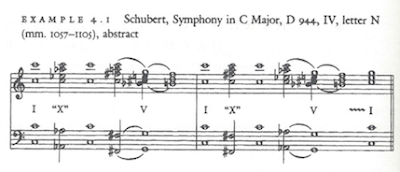It must be a terribly awkward position to be in, to have one's career devoted to the critical appreciation of classical music but to have one's soul riven by doubt as to its quality:During one riff, Mr. Trump extolled the richness, history and, indeed, the superiority of Western culture. “We write symphonies,” he proudly proclaimed, as if to prove his point.Many commentators seized on the line as a clue to the president’s thinking, his “white-nationalist dog-whistling,” as Jonathan Capehart, a columnist at The Washington Post, bluntly put it.But the president’s smug invocation of the Western symphonic heritage also pressed a sore spot for me as a music critic. Nothing impedes the appreciation of classical music — and keeps potential listeners away — more than the perception that it is an elitist art form, that composers throughout history, and their aficionados today, uniformly consider it the greatest, loftiest and most ingenious kind of music. Few classical music fans, in my experience, argue that the Western symphonic repertory stands apart from or atop music of other cultures, or other types of Western music.
“Eleanor Rigby,” I’d argue, is just as profound as Mahler’s “Resurrection” Symphony. But the Mahler, scored for large orchestra, chorus and two vocal soloists, is a whole lot longer, lasting more than 80 minutes. You have to have a penchant for hearing large-scale structures unfold over relatively long periods to appreciate classical music, though this can be an acquired skill.
It’s this large-scale quality, the sheer dimension of expression that the master composers strove for, that makes classical music different. This doesn’t mean it’s superior.What would make it superior, one wonders? Better choreography?
What Mr. Tommasini and many of his colleagues seem to have are some deep-seated neuroses about art, history and certain words. As an important part of their role is to educate and shape taste, even though they might deny it, this makes it difficult for them to say good things about classical music. It is long and requires focus, therefore more difficult to appreciate than, say, Eleanor Rigby. So if it does not offer a depth of aesthetic experience commensurate with the greater challenge, then why bother? Why indeed!
I think the problem is that the intellectual elite of our day, which certainly must include Mr. Tommasini, have instilled in them a certain ideology that commits them to a profound guilt about Western Civilization. Part of this is an egalitarian ethos that erases all standards of taste and quality. This is an unquestioned assumption that, if you sincerely hold it, causes you to say that Eleanor Rigby is just as profound as Mahler's Resurrection Symphony. Or, my favorite example, that Justin Bieber is just as profound as Bach. Lady Gaga and Franz Schubert. Hey, we could go on all day. This, by the way, is what we in the philosophy biz call a "reductio ad absurdum."
Here is another manifestation of the ethos:
Well, few classical music fans that are as deeply indoctrinated as Mr. Tommasini, certainly. But whenever I see judgments like this I strongly suspect that the author of them knows very little about North Indian music nor Javanese gamelan. There is a fundamental difference between the way those musics are composed and performed and the Western tradition in music which takes on very different and much more profound aesthetic challenges. Frankly, the doctrine of multiculturalism is pretty much a lie.Few classical music fans, in my experience, argue that the Western symphonic repertory stands apart from or atop music of other cultures, or other types of Western music.But with just three words Mr. Trump buttressed this unfortunate perception. Did he mean that Beethoven’s “Eroica” Symphony is simply greater than, say, an Indian sitar master playing a classic raga? Or an exhilarating Indonesian gamelan ensemble?
Leaving that outrageous statement for you to ponder, let's listen to Eleanor Rigby and, ok, Mahler:
What do you think?











